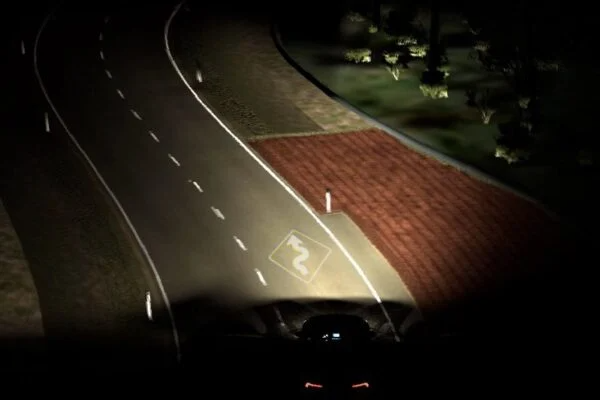For a long time, head-up displays have enabled drivers to keep their eyes on the road ahead. Now Ford engineers are testing a new headlight technology that could help the person behind the wheel focus more intensely on the road, especially at night: In the dark, the system projects important information such as directions or speed limits onto the road surface. This means that the driver’s eyes are almost inevitably drawn to the road ahead.
Especially at night, the risks of driving increase. A recent road safety survey showed that 40 percent of vehicle collisions in the UK occur in the dark – even though far fewer people are behind the wheel at night than during the day. There is a particular risk when drivers take their eyes off the road: If a car is traveling at 90 km/h, it travels 25 meters per second. This means that even a brief glance at the navigation device in the car can result in ten meters or more being traveled “blindly”.
Projections using high-resolution headlights also potentially have advantages for other road users. For example, a crosswalk could be displayed on the road, which is easily visible to both drivers and pedestrians, even if correspondingly existing road markings are faded or worn. It would also be possible to display a suggested driving line that the person behind the wheel can follow, for example, in order to overtake cyclists at a sufficiently large distance.
The development of this pioneering headlamp technology began rather by accident: engineers at Ford experimented with projections onto a blank wall. They quickly asked themselves what information could theoretically be projected onto the road using modern headlights to make driving at night easier. With appropriate online networking, the technology could, for example, warn of weather changes, such as snowfall, fog, icy roads ahead. Connecting the headlight to the navigation system could also indicate upcoming turns. At the same time, the width of the vehicle projected onto the road could indicate whether or not it would fit through a gap or into a parking pocket.
“What started as a purely conceptual idea could take vehicle lighting technology to a whole new level in the future,” explains Lars Junker, responsible for advanced driver assistance system functions and software at Ford Europe. “Thanks to modern technologies, headlights will soon be able to do much more than just illuminate the road. Using projections, the person behind the wheel could receive important information without having to take their eyes off the road for even a second to do so.”
Video: https://youtu.be/9I0giQS-RA0
Fact Sheet: https://ots.de/izAPon



Leave a comment